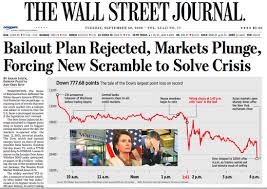It happened twice to me

Alexandra Gorn on Unsplash
What keeps you awake at night?
That is the question I and my colleagues repeatedly asked potential new clients as we visited them for the first time. It was those things that we needed to know in order to help them to improve their businesses. And unless we knew, it was difficult to determine what to fix and where to start.
We are all faced with certain things that just aren’t going well. There are times we try to muddle through or hope that the problems will go away by themselves. That rarely if ever happens. Problems usually do not fix themselves. They need intervention by us and others in order to make that happen
I have had my own issues to deal with that kept me awake at night.
In most cases, the fixes weren’t too bad and didn’t take too long to occur. But there are two that really shook me and kept me awake for many nights.
The first occurred as the Manager of Project Engineering at Binney and Smith, which is now Crayola Corporation. It was my department’s function to support Manufacturing at three domestic and two international facilities.

Crayola is the preeminent manufacturer and seller of crayons in the United States. When they introduced an automated method of molding crayons, it virtually chased all of the competition out of the market. No one else could produce crayons at the speed. quality, cost and volume that we could.
That was not only a blessing, but also a curse because if there were any hiccups in production, there was no where else that we could turn in order to pick up the slack. So, it was important that our manufacturing was at its highest level at all times.
I was always in early each day to start my work.
At that time of the workday there were few or no distractions and I could get certain things done before the majority of folks showed up and started to vie for my time and attention.
When anyone did stop by at an early hour it was to usually say, “Hi” and to just chit chat for a few minutes. But, on one particular day, that wasn’t the case.
The head mechanic for the plant at the Easton, PA operation stopped by and he was not a happy camper. He sat down and said, “We have a big problem”. He was not one to say this without meaning it, so I knew he was really serious.
I was told that when cleaning one of our automated molding machines, the table of the machine collapsed. The table and the infrastructure were all made from carbon steel. Over time, the steel disintegrated from corrosion from the water and the minerals running through it. The internal structure was gone and the table was only supported by rust and residue. When he and his team went to flush the one machine, it dissolved all of the rust and residue and the table collapsed.
You may wonder why and how this could happen with proper maintenance.
Well, the table was sealed, so no one could look inside with taking it apart to do an inspection of the internals. That was not the standard procedure for maintenance and cleaning and was not a normal check. It was only done if there was a molding problem and that had not happened on the machine. And, the designers of the machine had not accounted for that type of internal wear.
Since all of the machines were built and started operation at the same time, it was safe to assume if this problem existed with one machine, it was probably happening with all of the others.
My first action was to tell him to not flush the other molding machines. The second was to contact our sister plant in Kansas and to tell them what had happened and that they too should not flush any of their machines. Then, it was to call the Vice President of Operations and inform him what had happened. Fortunately, he also was an early bird, so I was able to talk to him immediately. This is the kind of news you don’t want to carry around alone.
Fixing this kind of problem was not easy.
A new design had to be completed that used materials that would not deteriorate like the current ones did. Fortunately I had some brilliant engineers who worked for me and they were able to solve that problem.
Then, there was the difficulty in finding fabricators to manufacture the parts. There were two items in particular that needed special attention. One was a special bearing that was instrumental to the machine’s operation. The company that produced these was still in business and they were contracted to manufacture new bearings for all of the machines.
The other were the tubes in which the crayons were formed. The original manufacturer was no longer in business and many of the shops we contacted were not interested in making these special tubes. We finally found a company in the mining industry that was willing to do the work. We contracted them to make approximately 45,000 precision tubes.
That then left establishing a budget, getting special executive permission and then getting the work going. The budget was developed for all of the machines. But the executives only gave me enough money to do 15% of the machines at any one time. As we completed that 15% and installed the new machines, they would release money for the next 15%.
Since the work to complete the 15% would take about 3 to 4 months, that meant that this project would take about two years to complete. And just because we weren’t flushing the machines, did not mean that any or all of them would not fail while we were manufacturing their replacements.
For two years, I lived through the possibility that we could be out of the crayon business.
While I didn’t need anyone to tell me how serious this was, I had no end of people reminding me about it on a daily basis and asking me why things were taking so long.
Each night I prayed before going to bed, as I had never prayed before. It is said that God answers prayers in many different ways. I must have been on his good side for those two years, because we did not have any further failures and all of the machines were completed and ran smoothly after installation. And, as we received our last production of tubes, the company making them went out of business.
I REALLY believe God answers prayers. I could now rest peacefully at night, knowing our crayon business was safe and secure.
You hope that something that traumatic only happens once in your life. I certainly did. But, it was not to be.
I have been away from Crayola for quite a while now. I was involved with Lehigh University as a Project Consultant and then started my own consulting enterprise with five other people. It was a bit of a struggle to get going, but things then ran smoothly. We had a great reputation and business was growing. And then it happened.
The financial crisis of 2008. It hit the homeowners for sure, but the cascading effect then hit the businesses. When something that dramatic occurs, it doesn’t matter how good your relationships are, it becomes a matter of every man or woman for themselves.

When companies are in a financial pinch or believe that they may be so in short order, they cut out what they think are non-essential activities or services. Outside contractors such as myself and my company fell into that category.
While our work didn’t totally evaporate, enough did to make our lives, difficult at best. We had to look at our own expenses and see what we could freeze or cut.
In order to have the biggest impact, as a good business owner or executive, you always look at your biggest expense area.
As a service organization, it was pretty obvious that our salary costs were our largest expense item.
When you are dealing with that, you are also dealing with people’s lives and livelihoods. As a business owner, I have always felt that after care and concern for your clients and their wellbeing, your number two concern is for your employees.
At espi, we paid our employees well. We also provided great benefits, including no cost healthcare to them. And the program was great. No other company I knew or know of does that. And when I told people about it they asked when they could come to work for us.
We now had choices regarding what to do about our employee expenses. A new or reduced healthcare plan was not in the picture. But salaries certainly were.
In many cases companies decide to cut people and reduce payroll.
That has a few effects for sure. First it causes people to lose their source of income. And in a time like that, finding a new job quickly is not realistic. It also violates my belief that we are responsible for the well being of our employees. That is a trust I refuse to violate.
The second thing is that it hurts the company. You are now getting rid of people who are working hard and earning money for you. To get rid of them means when works comes, there are fewer people to do it. That is a problem.
So, we went to the employees with the facts. We could reduce headcount or reduce everyone’s and I mean everyone’s salaries. As an owner and company leader, you better be right in there with whatever decision you make. That is what we decided. Everyone took a temporary 20% pay cut.
We were still not out of the woods. Even with cuts in all expense areas we were still coming up short. To stay viable, we tapped into our Line of Credit. And what secured that was the personal guarantees of each owner that once it was fully utilized, we had to all chip in and start paying it back.
I tried to stay cool and calm with my fellow owners.
We met regularly to discuss where we were at and how we could generate new business. But, every night I went home and prayed, just that I had done at Crayola that things would turn out all right.
At one point, we reached 80% of the LOC maximum. We then stabilized and it didn’t grow any more. New business started to roll in. We were able to pay off the Line of Credit. Once that was done, we paid back every cent of the salary cuts that we had taken from everyone. The employees were paid first. Once they had gotten all that was owed to them, the owners were then repaid. I don’t know what other firms do or would do, but when you value those who work for you, that is the right thing to do.
So, the crisis was dealt with and we were again viable.
I lost some sleep, but it made me a firmer believer that if you address your problems in a sound way things can and will work out.
It also made me more empathetic to my clients and potential clients. You never know what “Keeps people awake at night”. But by having gone through this twice, I am better prepared to help others to get through their situations.
Pete, Never new you had restless nights of sleep, I have been down that road as well.
Yup. Wasn’t fun.